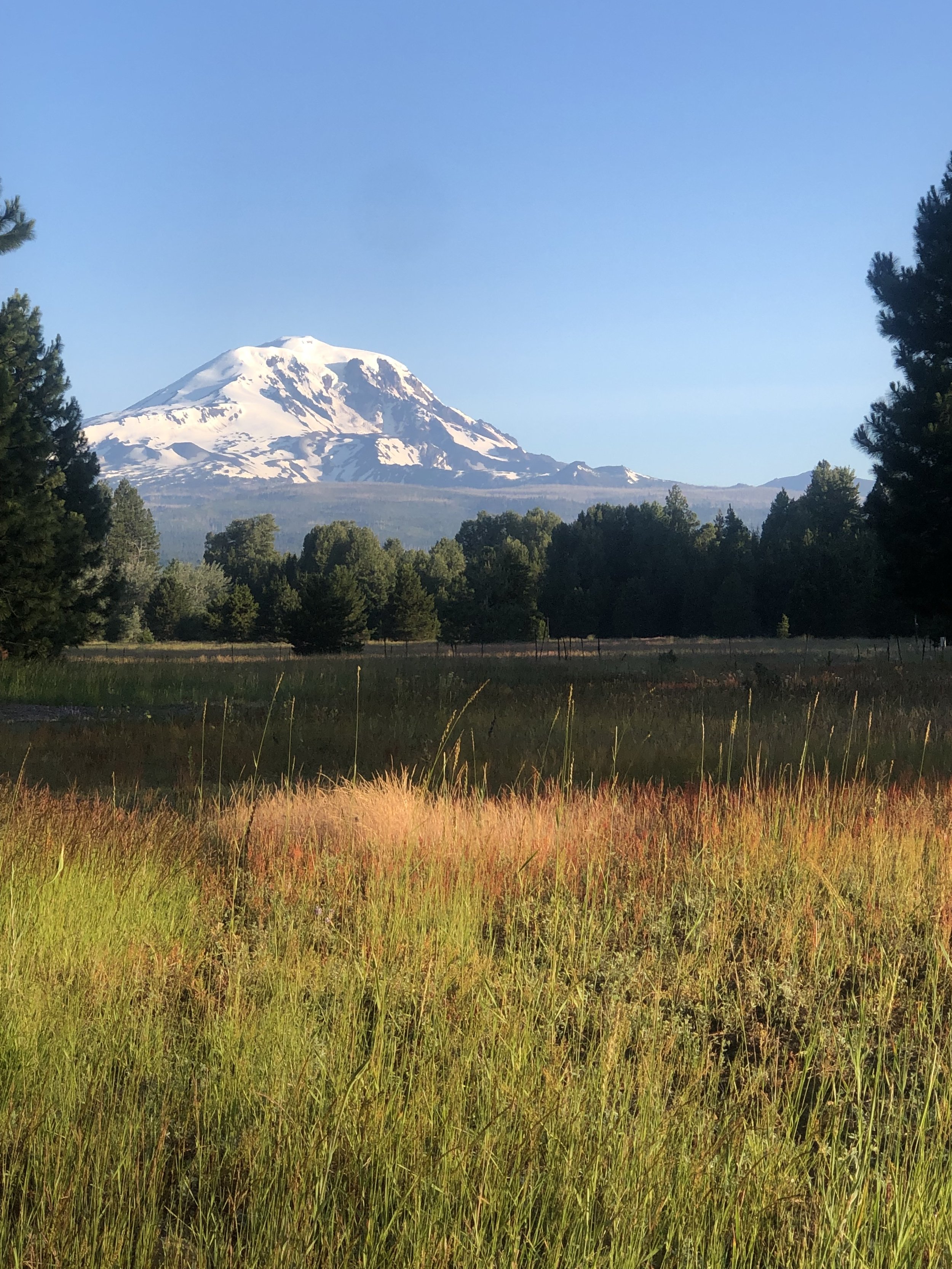I have every good intention of having a legit spiritual practice. In my mind this is what that is supposed to look like. Early in the morning I head upstairs, step into the lovely little meditation space I created a couple of years ago, light the candle, settle onto the cushion I purchased just for this purpose, set my Insight Timer app for 20 minutes, focus my gaze on the Buddha statue with the beautiful cross around her neck, take a deep cleansing breath, and sit until the timer goes off. Those 20 minutes are how I am supposed to connect with God. With the holy and the sacred that flows through and around everyone and everything.
That’s what a legit spiritual practice is supposed to look like.
Here’s what mine actually looks like.
Early in the morning I walk to the kitchen, pour a cup of coffee, put on a jacket against the chill, and head out to our field. Settling into the chair next to Tom, it’s impossible not to focus my gaze on the mountain in front of our home, take a deep cleansing breath, and sit. No timer. No Buddha. No candle. No cross. Just us, our coffee, and Gracie-the-chocolate labradoodle. We watch the birds, and wait for the sun to crest the pine trees and hit the anthill a few yards away rousing the ants to another day of work on behalf of their community. We read a daily offering from the CAC that lends a holy perspective to our human experience. We talk about everything and nothing at all. We give thanks. We grieve. We complain. We apologize. We laugh. We cry. We do the sometimes hard work of trying to love each other well, or at least a little better. That time, in those chairs, is how we connect with God. With the holy and the sacred that flows through and around everyone and everything.
That’s a legit spiritual practice too.
Almost anything can be a spiritual practice if it helps us to connect, however briefly, to the sacred in the midst of our ordinary lives. It doesn’t have to look like anything other than what it is. A spiritual practice can be as short as our next breath if we notice it, as messy as a toddler’s meltdown if we stay present for it, as scary as engaging a therapist to help us unhook from old stories and heal from old wounds, and as difficult as having the conversations we don’t want to have. Our practice can be as mundane as doing yet another load of laundry, or as miraculous as a few unexpected quiet moments before the rest of the house wakes up. It’s in the presence and the noticing that the practice occurs.
It’s not lost on me that there is a privilege that makes my brand of morning spiritual practice possible. We are both white with all of the advantages that has granted us over the course of our lives. We are decidedly middle class, and generally retired with a bit of time and money to spare. Recognizing that privilege brings with it the responsibility to work for a world that is more just, loving, and inclusive. A world that recognizes the holy and the sacred that flows through and around everyone and everything.
That’s a legit spiritual practice too.









